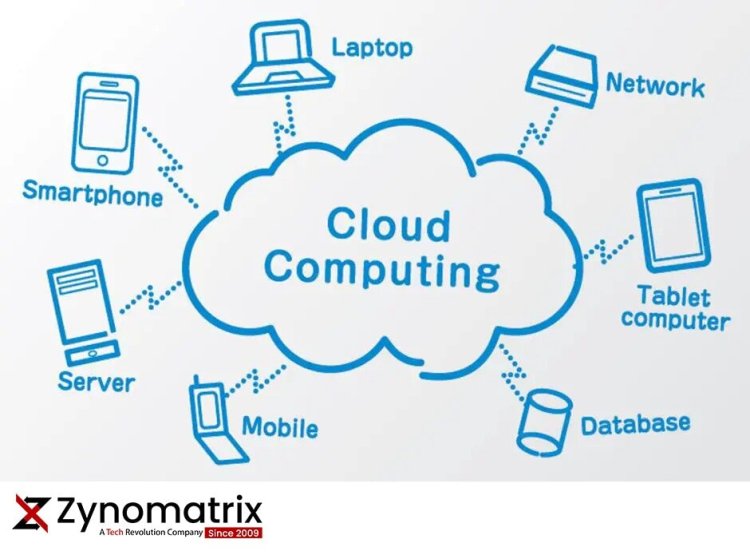Cloud Computing Trends and Innovations: Moving Your Business to the Cloud.
Dive into the exciting world of cloud computing as we explore the latest trends and innovations shaping the future of IT. Discover how organizations are leveraging the power of the cloud to drive efficiency, scalability, and innovation. From serverless computing and multi-cloud strategies to edge computing and AI integration, this blog will be your guide to staying ahead in the rapidly evolving cloud landscape. Join us as we delve into the realm of serverless computing, exploring how it enables businesses to focus on their core competencies while leaving infrastructure management to the cloud. Learn about the benefits of adopting a multi-cloud approach and how it empowers organizations to leverage the strengths of multiple cloud providers for improved flexibility and resilience.

Introduction:
Cloud computing has transformed the way businesses operate, providing scalable, on-demand access to computing resources and enabling organizations to innovate, streamline operations, and deliver services more efficiently. As technology continues to evolve at a rapid pace, the cloud computing landscape is constantly evolving, giving rise to new trends and innovations that shape the future of the industry.
1. Serverless Computing:
Serverless computing represents a paradigm shift in application development, revolutionizing the way software is designed, built, and deployed. In this serverless era, developers can focus solely on writing code for their applications without worrying about managing the underlying infrastructure. This approach brings unprecedented scalability, cost-efficiency, and flexibility to the world of software development.
2. Multi-Cloud Strategies:
In today's interconnected and dynamic digital landscape, businesses are increasingly adopting multi-cloud strategies to harness the power of multiple cloud computing platforms. Multi-cloud refers to the practice of utilizing multiple cloud service providers to meet different business needs, leverage specialized services, and mitigate risks associated with vendor lock-in.
3. Edge Computing:
In the era of interconnected devices, data-intensive applications, and the Internet of Things (IoT), traditional cloud computing architectures face challenges related to latency, bandwidth limitations, and privacy concerns. Enter edge computing – a paradigm that brings computation and data storage closer to the source of data generation, enabling faster response times, efficient data processing, and enhanced user experiences.
4. Containers and Kubernetes:
Containers and Kubernetes have revolutionized the way applications are developed, deployed, and managed in modern IT environments. As organizations strive for agility, scalability, and portability, these technologies have emerged as powerful tools to streamline application delivery, enhance resource utilization, and improve overall operational efficiency.
5. Artificial Intelligence (AI) and Machine Learning (ML) in the Cloud:
Artificial Intelligence (AI) and Machine Learning (ML) have emerged as transformative technologies that enable organizations to extract valuable insights, make data-driven decisions, and automate complex tasks. With the rise of cloud computing, AI and ML capabilities have become more accessible, scalable, and cost-effective, revolutionizing the way businesses leverage these technologies to drive innovation and gain a competitive edge.
6. Hybrid Cloud and Multi-Cloud Networking:
As organizations embrace the benefits of cloud computing, they often encounter the need to navigate complex networking scenarios involving hybrid cloud and multi-cloud environments. Hybrid cloud refers to the combination of private and public cloud infrastructure, allowing organizations to leverage the scalability and flexibility of public clouds while maintaining control over sensitive data and applications in private infrastructure. On the other hand, multi-cloud involves using multiple cloud service providers to meet specific business needs and avoid vendor lock-in.
7. Security and Compliance in Cloud Computing:
Cloud computing has revolutionized the way organizations store, process, and manage data, offering scalability, flexibility, and cost-efficiency. However, with the benefits of cloud computing come significant concerns related to security and compliance. As organizations entrust their sensitive data and critical workloads to cloud service providers, it becomes essential to ensure robust security measures and adherence to regulatory requirements.
What's Your Reaction?









![Async/Await in [removed] Simplifying Asynchronous Code](https://zynomatrix.com/uploads/images/202310/image_650x433_651bbdea24f41.jpg)











